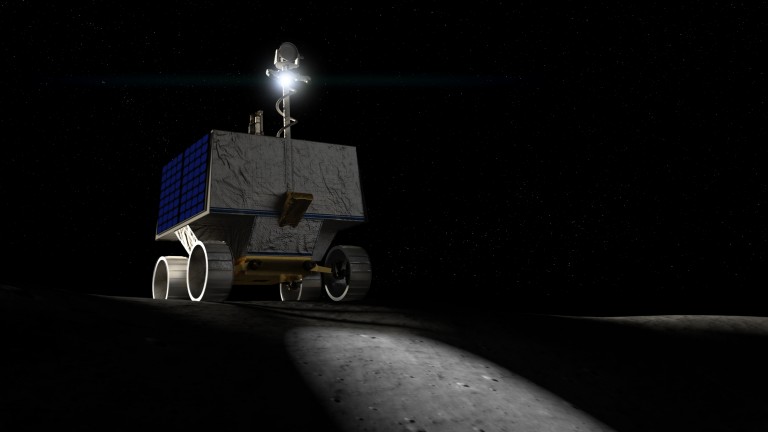NASA announced on Friday it would launch a robotic rover to the moon in December 2022 to look for water ice reserves stored on or below the surface.
The mission: NASA is calling it the Volatiles Investigating Polar Exploration Rover, or VIPER. After landing, VIPER will roam around the south pole of the moon for 100 days, using a neutron spectrometer to find signs of ice deposits below the surface. A neutron spectrometer could look for the telltale signature of neutrons that could come from hydrogen atoms in water molecules. The rover will use a one-meter drill called the Regolith and Ice Drill for Exploring New Terrain, or TRIDENT, to collect underground samples and study them with other onboard instruments.
Why water? Water ice could be a vital resource for the future spaceflight industry. Not only could these reserves be harvested to help run and maintain life support system for future lunar colonies, but the water could also be split into hydrogen and oxygen and used as rocket propellant for new kinds of spacecraft.
However, no one is sure how much water ice is stored on the moon. (NASA administrator Jim Bridenstine himself has been known to say the moon has “hundreds of millions of tons of water” at times, and “hundreds of billions” at others.) Before it crashed, India’s Vikram lander for its Chandrayaan-2 lunar mission was going to study the south pole reserves in greater detail.
Private partnership: The TRIDENT drill will be built by Honeybee Robotics. VIPER will launch aboard a commercial rocket, under the agency’s Commercial Lunar Payload Services (CLPS) program, which includes more than a dozen other scientific investigations to the moon, spearheaded by American companies.

